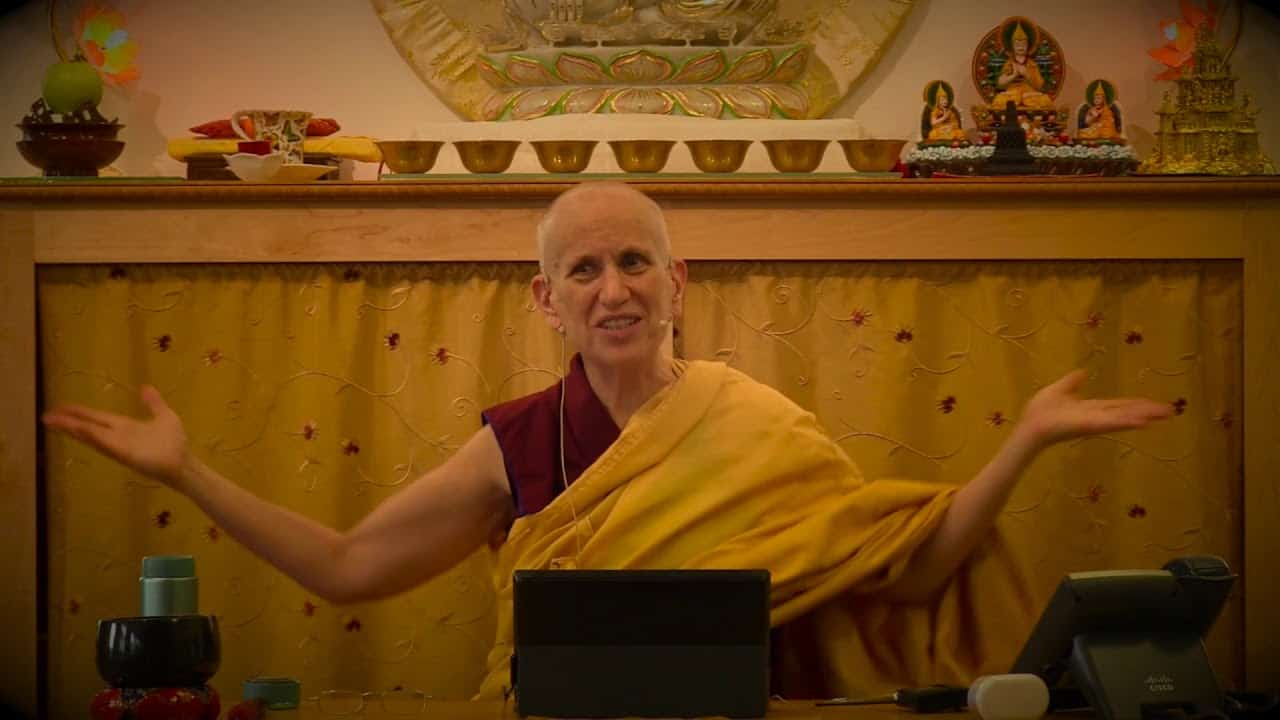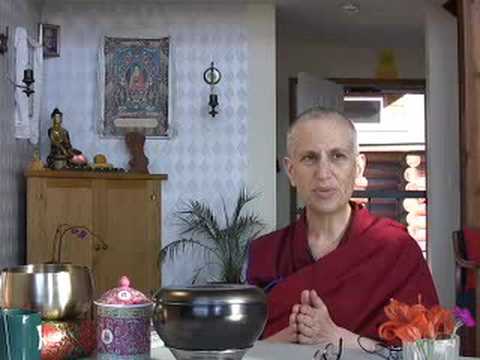Advice for beginner meditators
Interested in starting a meditation practice? Meditation habituates us to positive thinking while providing many physical and mental benefits. Part one of this video series covers the basics of Tibetan Buddhist meditation: setting a good motivation, body posture, creating a schedule, session length, dealing with distractions, and the difference between stabilizing and analytic meditation. For off-the-cushion practices, check out the videos on walking meditation, prostrations, and altar setup. It’s important to have a curious and positive approach to exploring these techniques!
Meditation 101
These talks cover all the basics: stabilizing and analytic meditation, posture, releasing tension, and setting proper motivations. The best motivations are to secure a good rebirth, liberation from cyclic existence, and the bodhicitta motivation seeking buddhahood for leading all sentient beings to liberation and enlightenment.
Meditation 101: Preparing physically and mentally for a meditation session
Setting Up a daily practice
Discusses the importance of setting up a daily meditation practice, including recommendations on schedule, session length, reflecting on what’s important in life, benefiting from our human potential, and rejoicing in our success.
How to sit in meditation
Venerable Chodron demonstrates all the key aspects of meditation: posture, cushion choice, leg positions, what to do with the hands, eyes, and mouth, and developing flexibility.
Dealing with distractions
Talks on dealing with the most common meditation challenges, including physical pain, discontent, restless energy, internal and external distractions, and drowsiness.
Advice for Dharma practice: Analytical meditation
Venerable Tarpa reviews using analytic meditation to bring the teachings into our experience and our heart while avoiding over-intellectualizing. These meditation topics help us consider recurring patterns in our lives from different angles leading to an inside understanding.
More on walking meditation
Part one discusses two types of walking meditation: developing awareness of bodily sensations and visualizing the Buddha or Kwan Yin at the heart, radiating light and loving-kindness to all beings. Part two discusses a third type: offering all beautiful objects encountered to the Buddhas and bodhisattvas or to sentient beings living in environments lacking beauty.
Walking meditation and its benefits
Questions and answers on meditation
A Q&A session with Venerable Chodron covering topics such as meditation vs. watching TV, kids and meditation, eyes closed or open, experiencing unusual colors and sensations, session length, visualization, the relationship between stabilizing and analytic meditation, meditation and attention deficit disorder, meditating while lying down, forgetfulness and mindfulness, use of music, guarding the senses, and observing thoughts.
Questions and answers on meditation
How to make prostrations
Venerable Chodron demonstrates how to do a full prostration and explains the hand gestures, visualizations, and the 35 Buddhas practice. We prostrate to help purify our negative karma and inspire ourselves to develop the qualities of the Triple Gem.
Instruction videos on prostrations
Setting up your altar
Part one provides guidance on how to set up a personal altar, explaining the purpose and meaning of each object. Part two explains how to make water bowl offerings, generate the bodhicitta motivation, and make offerings to the Three Jewels. Part three describes how to take down the offerings and water bowls at the end of the day.
Sravasti Abbey Monastics
The monastics of Sravasti Abbey endeavor to live generously through dedicating their lives to the Buddha's teachings, practicing them earnestly, and offering them to others. They live simply, as the Buddha did, and offer a model for society at large, showing that ethical discipline contributes to a morally grounded society. Through actively developing their own qualities of loving-kindness, compassion, and wisdom, the monastics aspire to make Sravasti Abbey a beacon for peace in our conflict-torn world. Learn more about monastic life here...


